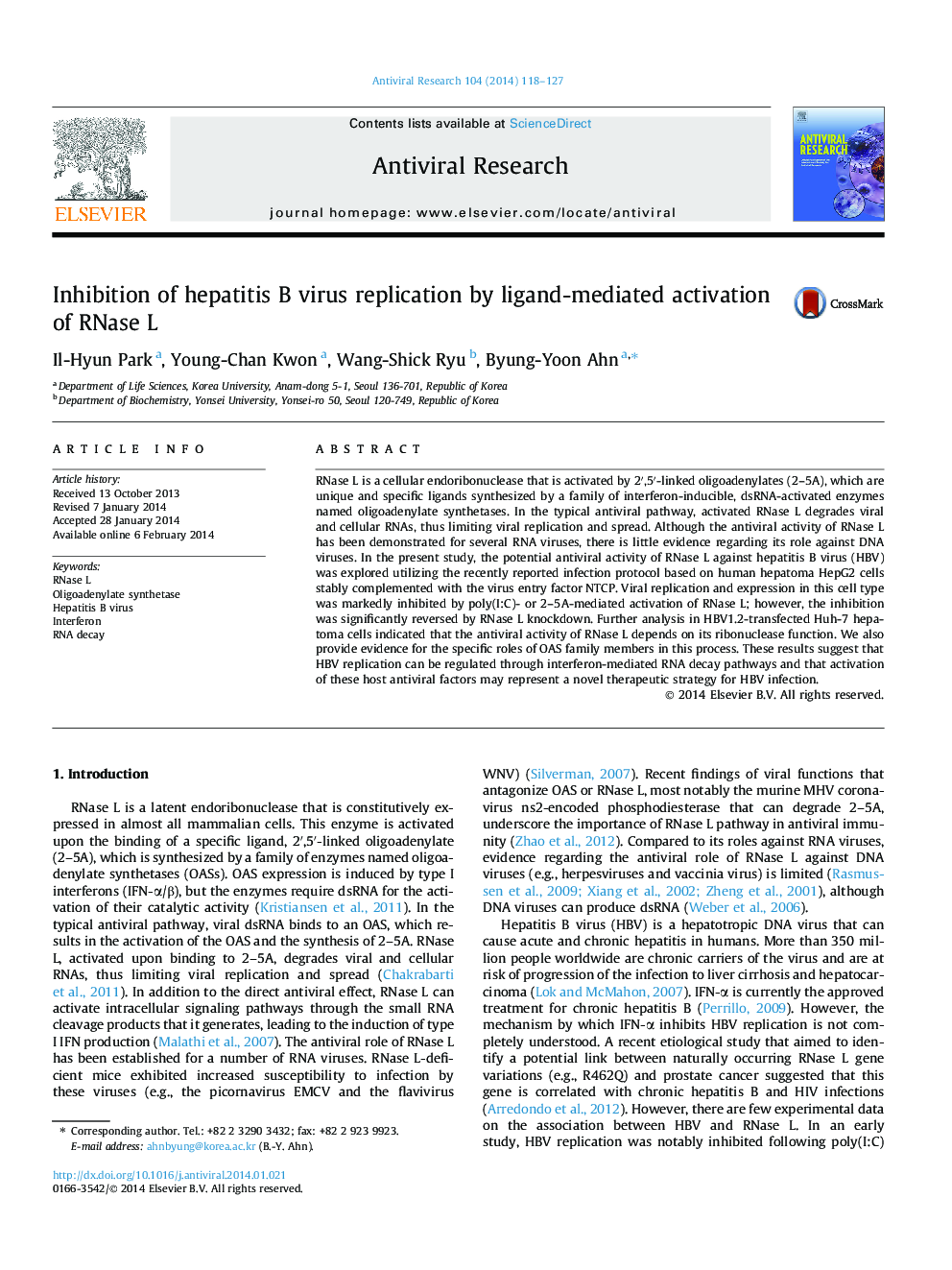| Article ID | Journal | Published Year | Pages | File Type |
|---|---|---|---|---|
| 2509894 | Antiviral Research | 2014 | 10 Pages |
•Activation of RNase L inhibits HBV replication in infected and transfected hepatoma cells.•Antiviral activity of RNase L depends on its ribonuclease function.•OAS2 and OAS3 but not OAS1 are involved in RNase L activation in the process.
RNase L is a cellular endoribonuclease that is activated by 2′,5′-linked oligoadenylates (2–5A), which are unique and specific ligands synthesized by a family of interferon-inducible, dsRNA-activated enzymes named oligoadenylate synthetases. In the typical antiviral pathway, activated RNase L degrades viral and cellular RNAs, thus limiting viral replication and spread. Although the antiviral activity of RNase L has been demonstrated for several RNA viruses, there is little evidence regarding its role against DNA viruses. In the present study, the potential antiviral activity of RNase L against hepatitis B virus (HBV) was explored utilizing the recently reported infection protocol based on human hepatoma HepG2 cells stably complemented with the virus entry factor NTCP. Viral replication and expression in this cell type was markedly inhibited by poly(I:C)- or 2–5A-mediated activation of RNase L; however, the inhibition was significantly reversed by RNase L knockdown. Further analysis in HBV1.2-transfected Huh-7 hepatoma cells indicated that the antiviral activity of RNase L depends on its ribonuclease function. We also provide evidence for the specific roles of OAS family members in this process. These results suggest that HBV replication can be regulated through interferon-mediated RNA decay pathways and that activation of these host antiviral factors may represent a novel therapeutic strategy for HBV infection.
